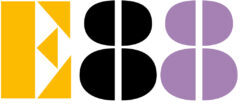SA 21 June 2025 14:45 Centre Céramique, Maastricht
Program:
Paul Pankert LAPS-LAB (2023) keyb., cl, glasses and electronics
Sarah Wéry EROICAEROICAEROICA (2019) alto fl., vc, pno, vocals and stones
Branka Popović Solitude self reflections (2005) pno
Rutger Muller EXORCISM (2018) pno, perc, vl, vc, fl, cl, electronics
musicians:
- Wouter Bergenhuizen, piano
- Anne Davids, flute
- Paul Pankert, violin, electronics
- Eline Hensels, cello
- Johan Naus, clarinet
- Jan van den Boomen, percussion
- Rutger Muller, electronics
In 2023, three cross-border ensembles celebrated milestone anniversaries: KL-EX (5 years), LAPS (Liège, 10 years), and Ensemble88 (Maastricht, 35 years). Paul Pankert’s virtuosic composition Lapslab for keyboard, bowed glasses, clarinet, and live electronics was created for their joint birthday project. In this piece, the octave is divided not into 12 semitones but into 10, requiring the keyboard keys to be reprogrammed. Five glasses of different pitches are used, combined with a synthesizer sound reminiscent of the late 1980s. Naturally, a microtonal birthday serenade is also embedded in the clarinet part.
EROICAEROICAEROICA is a piece created in collaboration with Trio O3. It questions the notion of heroism in its daily, intimate form rather than a flamboyant or mythical one. Can heroism be a domestic quality? The work explores choices such as undergoing certain therapies, deciding whether to have an abortion, or performing arduous, even violent tasks—framing these as heroic actions. It attempts to map an auditory dreamlike journey from the initial impulse to an invisible, unrecognized heroic act. Taking an action with extreme consequences, knowing the cost, but doing it anyway—sometimes daily, in solitude, without recognition—only for a possibility. The piece is meant to be in motion, luminous, and aerial.
Solitude self reflections for piano is a short process of reflecting an inner world in the sound of the instrument. Composition comprise four sections, each depicting different state of mind. The sections are compressed in order to deliver the very essence of a certain kind of atmosphere. It was written in 2005 with intention to explore and possibly find a specific nuance of sonority of the piano through new kind of virtuosity and through combination of dense disonant harmony with gentle consonant chords. The piece reflects the process of composing, a state of deep isolation and concentration in which composer seeks and creates a new sound of different quality and put it in a specific time grid.
Fluctuating between meditative gongs and overwhelming speedcore rhythms, music and performance work EXORCISM explores the possibility of an exorcistic ritual during an underground club night. Electroacoustic soundscapes form a base for improvised collaborations with instrumentalists and dancers.
Could an EXORCISM be a universal and secular state of mind, just like meditation? And can we tap into this cathartic mind space by allowing ourselves to be overwhelmed? Can we override our rational understanding of rhythm, dance and movement – and, instead, let go?
EXORCISM challenges performers to engage in above questions through a balancing act of control (ritualism) and loss of control (intuition). Gongs play a compositional and spiritual role in the performance, as they – too – fuse a a controlled stability with a cosmic chaos (heard in the constantly evolving overtones).
Rhythmically, EXORCISM was inspired by the overwhelmingly fast (300BPM+), rhythms of speedcore music (see for example DJ Mutante, Catscan, Nekrosystem, Gabba Front Berlin, Gridbug, Bart Hard and the glitch-breakcore of Xanopticon). To be enchanted by these rhythms (on the dancefloor), it’s probably best to try to lose control – mentally and physically.
